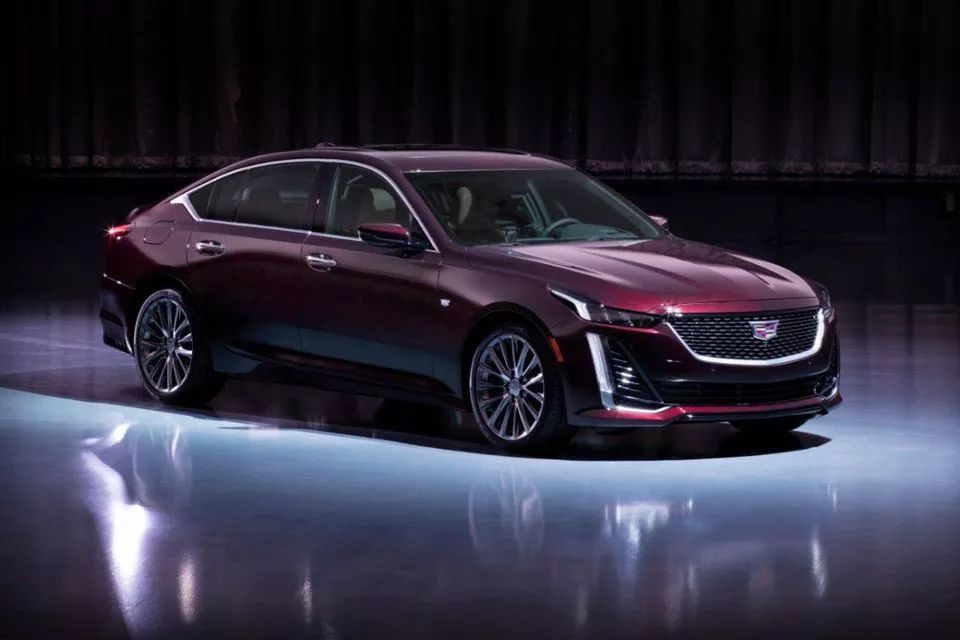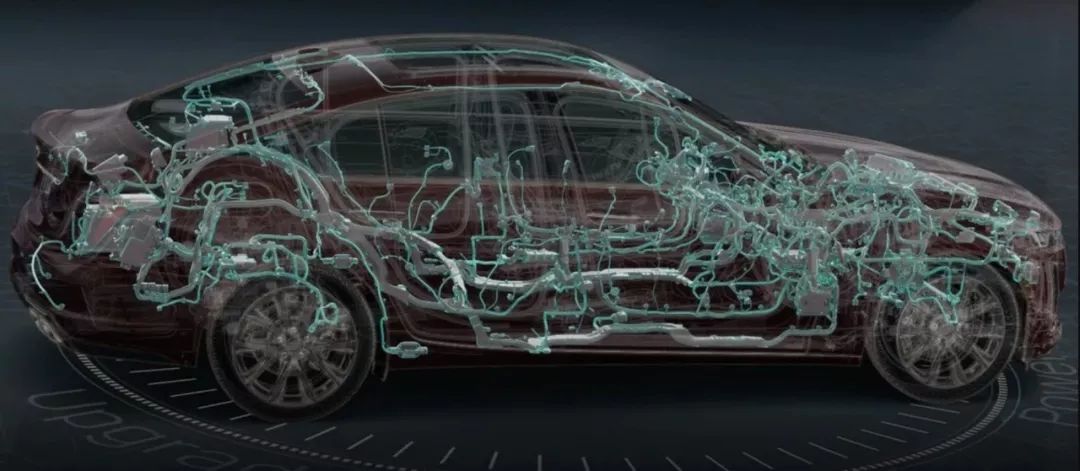The Impact of Model 3 and General Motors’ New Electronic Architecture on the Automotive Industry
In the announcement of Mark Reuss becoming the CEO of General Motors on January 3, 2019, he pledged to “double the investment in electric and autonomous vehicles within the next two years.” On May 20th, he introduced the next-generation electrical-global architecture called Global B in Detroit, which laid the foundation for General Motors’ true “smart cars.”
For most consumers, the impact of Model 3 comes mainly from the extreme performance of breaking the 0-60mph record in 3.5 seconds, and the radical revolution of instrument panel layout. However, for automotive electronic engineers, its most significant innovation is the fully upgraded next-generation electrical-electronic architecture.
The electrical-electronic architecture is so crucial that General Motors said in the announcement that the new architecture will provide “system support for electrification, active safety, in-vehicle entertainment, intelligent connectivity, and Super Cruise technology upgrades in future car product development.”
Why Upgrade the Electrical-Electronic Architecture?
The answer to this question may date back to half a century ago. The electrical-electronic architecture integrates all kinds of sensors, central processors, wiring topology, electronic distribution systems, and software and hardware to realize the configuration, function, operation, and energy distribution of the entire vehicle.
As early as the 1950s, cars had initial electrical equipment, including 12V system, circular terminals, woven insulation materials, etc., belonging to the weakest electrical-electronic architecture.
From the 1960s to the 1990s, with the introduction of audio equipment, lighting equipment, emission electronic modules, wiring localization, and sealed connectors, particularly with the new architecture standards, data and communication protocols, and relevant laws and regulations in the 2000s, the complexity of automotive electrical-electronic architecture reached an entirely new level.
CEO of CHJ Automotive, Li Xiang, talked about the issue of the highly complex electrical-electronic architecture:
(The high complexity of electrical-electronic architecture leads to) the construction of the entire car becoming complex and very expensive. Even the safety of the car is related to its complexity. In the future, the requirements for data transmission in integrated workshops will change with intelligence. The next generation of cars will be fully Ethernet, including various functional connections, and the wiring will be minimized.
By then, the era of cars being a mass of wires inside will become the era of real printed circuits and semiconductors.The key issue lies in the development of intelligent aspects of automobiles, namely autonomous driving and in-car entertainment systems, which are still in their early stages of development. Even Tesla Model 3, with the most advanced technical architecture among mass-produced cars, has only achieved level 2 autonomous driving capability. With the development of technology, the competition for computing power, electricity, power, and sensor resources in the vehicle will become even more fierce, and the existing electronic and electrical architecture is already overwhelmed.
Moreover, even without discussing autonomous driving, the unprecedentedly rich functions and configurations of current intelligent vehicles have pushed the capabilities of the entire electronic and electrical architecture to the limit. Every new function is a challenge to the electronic and electrical architecture.
It is only logical for General Motors to release a new generation of electronic and electrical architecture at this time, which it did on May 20th. Although officially released on that day, the preparation for General Motors’ new architecture had been under way for a long time. As early as June 25th, 2015, Mark, who was then in charge of global product development at General Motors, revealed to the media that General Motors was developing a completely new electronic and electrical architecture, which would be named Global B. (General Motors’ current electronic and electrical architecture is Global A.)
Mark mentioned a key feature of Global B back then, which was the ability of the entire vehicle to support OTA, including the electronic control unit related to the powertrain. After four years, Global B is finally ready to be put on the market. However, in the fiercely competitive market in China, many domestic auto brands have already achieved whole-vehicle OTA capabilities before foreign brands, apart from Tesla, putting General Motors’ OTA capability in a difficult position. A foreign media outlet gave the following headline:
“Electric Chevys Will Be OTA-Update Capable: Decade Behind Tesla.”
The truth is, do you really think it takes General Motors five years to develop OTA capability? In fact, back in 2016, General Motors was already facing various impacts and pressures from the “bad boys” in Silicon Valley, Tesla, and the media asked Mark why General Motors couldn’t provide Tesla-style OTA capabilities. Mark’s answer was “safety.”>Regardless of the present or foreseeable future, the critical role of software and its importance to our vehicles cannot be underestimated. However, at present, we will not carry out OTA on key systems involving driving safety, such as the braking system.
>
After Global B was released, Al Adams, the Director of General Electronic Electrical Architecture, explicitly stated that ” components and systems can be updated and improved throughout the entire lifecycle of the car, and electronic electrical architecture is the next battlefield in the automotive industry”. Considering the increasing investment in network security from General Motors in recent years, we can cautiously believe that General Motors has resolved the potential hazards that OTA may bring to the entire car.
According to General Motors, more than 300 electronic electrical engineers from the Warren Global Technical Center and the Milford Test Field have been researching and developing Global B for five years, applying for more than 100 patents. The Warren Global Technical Center was originally General Motor’s engineering research and development center, but in August 2017, General Motors invested $1 billion to expand the Warren center on a large scale, and recruited more than 2,600 new energy and vehicle networking R&D engineers. Global B may be the first project to benefit from that expansion.
In July 2017, legendary white hat hacker Charlie Miller and partner Chris Valasek, who had long focused on automotive networking security research, joined General Motors and became the chief security architects of self-driving cars. Until today, General Motors has established a research team dedicated to preventing unauthorized access to vehicles and users, responsible for sharing research on vehicle information, and analyzing emerging security risks in the automotive industry.
According to General Motors, Global B will establish physically independent security hardware, and thoroughly solve security risks from both software and hardware perspectives.# Tesla’s approach to safety and security sets it apart from traditional car companies
Tesla’s story is markedly different from that of the traditional automakers. In 2012, after introducing the Model S with full vehicle OTA capabilities, Tesla’s management elevated safety to the highest priority. Based in Silicon Valley, Tesla had access to security experts from internet giants, such as Chris Evans, Chief Security Engineer at Google’s Project Zero, and Kristin Paget, Apple’s former hacker princess, both of whom joined Tesla as security leads reporting directly to CTO JB Straubel.
On the other hand, Charlie Miller, now employed by General Motors, has previously expressed his admiration for Tesla, noting that Tesla sponsors or initiates hacking contests every year to encourage white-hat hackers to search for vulnerabilities in Tesla vehicles and offer generous rewards upon confirmation of successful exploit. Through this decentralized approach and experience, Tesla has gained a comprehensive understanding of security architecture.
Finally, the last feature of Global B is its ability to manage and process 4.5 TB of data every hour, a five-fold improvement over Global A’s performance. As Mark points out, this is aimed at supporting autonomous vehicles, as the cameras, lidar and V2X produce vast amounts of sensor data.
How will the electrical architecture evolve?
We can’t talk about the evolution of electrical architecture without discussing the Tesla Model 3. As we noted in the beginning, the electrical architecture represents the biggest innovation of the Model 3. In one sentence, Model 3 leads traditional car companies by at least five years in terms of electrical architecture.
Below is a schematic chart developed by Bosch, illustrating the evolution trend of the automotive electrical architecture, where “domain control” and “zone control” refer to Bosch’s categorization of automotive electrical architecture.While the mainstream electronic electrical architecture was still evolving in the central or hybrid domain control architecture, Model 3 went straight up to the level of the Vehicle Computer. Considering the long iteration cycle of the electronic electrical architecture, we can understand why Audi and Porsche engineers had to rebuild the electric car platform PPE, which will not be put into production until 2022, after reverse disassembling Model 3.
Model 3, with its radical and all-encompassing innovation, has accelerated the iteration speed of the entire industry’s electronic electrical architecture.
So, what does “central computing unit with BCM on the left and right” mean?
According to Delphi’s division of ECU centralized control in different functional domains, the automobile electronic electrical architecture can be divided into the following five domains.
-
Body & Convenience Domain
-
Infotainment System Domain
-
Chassis & Safety Domain
-
Powertrain Domain
-
Advanced Driver Assistance System Domain (ADAS)
What about Model 3? It only has three domains.
-
Central Computing Module (CCM)
-
Left Body Control Module (BCM LH)
-
Right Body Control Module (BCM RH)
Among them, CCM integrates the ADAS domain, infotainment system domain, and communication system domain completely, while the body & convenience domain, chassis & safety domain, and some powertrain domain are divided into BCM LH and BCM RH respectively.
From hardware to software, independently developed thoroughly, Model 3 defines the shape of the next-generation electronic electrical architecture.
So, what new imagination will the general Global B have? The demonstration model of this Global B architecture is the Cadillac CT5. This car will be the first model under the Global B architecture. In addition, SuperCruise, which supports automatic lane change function and has attracted much attention from General Motors, will also make its debut on CT5.

We can come to such a conclusion: although not an electric car, in terms of other technology aspects except for the powertrain, Cadillac CT5 plays a similar role to Porsche Taycan and Audi e-tron during the period of transformation of the giants interweaving new and old technologies.Translate the Markdown Chinese text below into English Markdown text in a professional way, keeping the HTML tags inside Markdown and outputting the result only.
As for the truly “intelligent electric vehicles”, we have to wait for General Motors’ BEV3 platform models to be put into mass production.



This article is a translation by ChatGPT of a Chinese report from 42HOW. If you have any questions about it, please email bd@42how.com.
